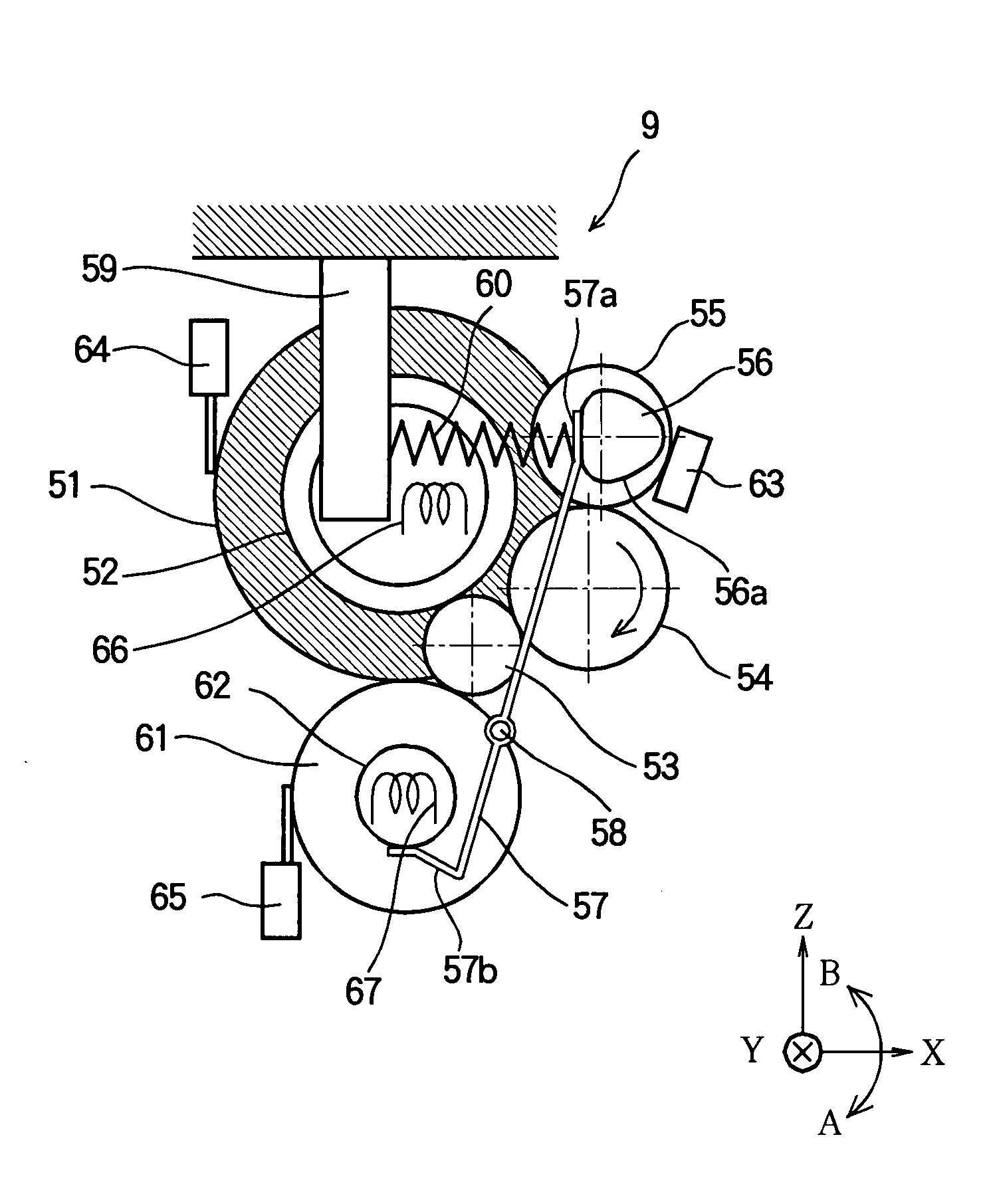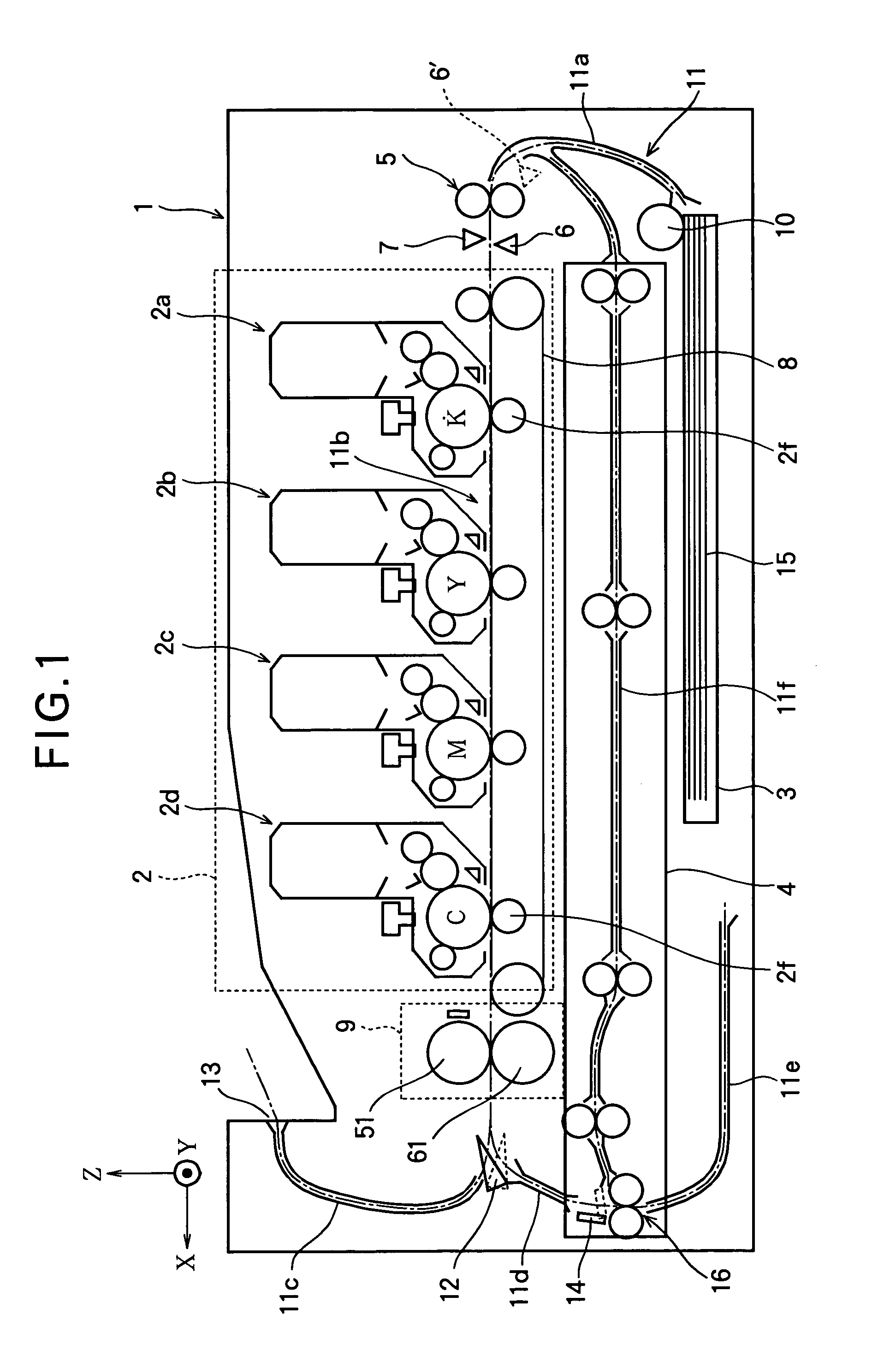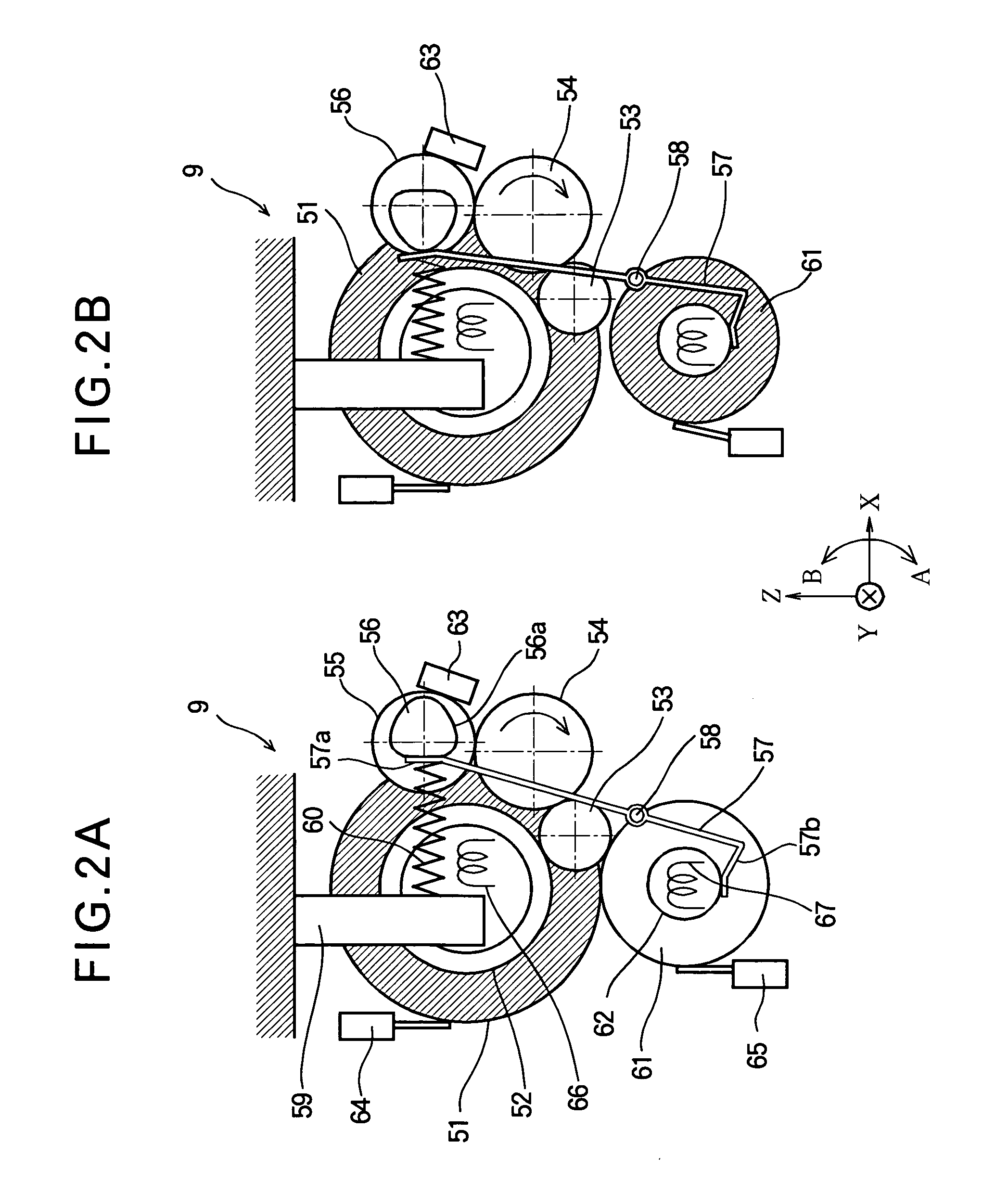Image forming apparatus
a technology of forming apparatus and forming roller, which is applied in the direction of electrographic process apparatus, instruments, optics, etc., can solve the problems of hot offset, uneven fixed image, and direct contact between the upper and lower rollers of the fixing unit, so as to prevent an excessive heating of the upper roller and achieve stable printing
- Summary
- Abstract
- Description
- Claims
- Application Information
AI Technical Summary
Benefits of technology
Problems solved by technology
Method used
Image
Examples
embodiment 1
[0028]FIG. 1 is a schematic front view of an image forming apparatus according to Embodiment 1 of the present invention.
[0029]The image forming apparatus 1 includes a cassette mounting portion to which a feeding tray 3 is mounted. In the feeding tray 3, a stack of recording media 15 (for example, recording papers) is accommodated. The image forming apparatus 1 further includes a duplex feeding unit 4 that feeds the recording medium 15 along a feeding path 11 and turns the recording sheet 15 upside down. The image forming apparatus 1 further includes a print process unit 2 that feeds the recording medium 15 along a feeding path 11, and transfers a toner image to the recording medium 15. The image forming apparatus 1 further includes a fixing unit 9 that fixes the toner image to the recording medium 15.
[0030]The uppermost recording medium 15 of the stack accommodated in the feeding tray 3 is picked up by a hopping roller 10 and fed into a feeding path 11a. The leading edge of the reco...
embodiment 2
[0061]FIGS. 5A through 5F are timing charts illustrating the operation of the image forming apparatus according to Embodiment 2 of the present invention. With reference to FIGS. 5A through 5F, the operation of the image forming apparatus according to Embodiment 2 will be described.
[0062]The structure of the image forming apparatus of Embodiment 2 can be the same as that of the image forming apparatus 1 (FIG. 1) of Embodiment 1. The structure of the control unit 101 of the image forming apparatus of Embodiment 2 is the same as that of the image forming apparatus (FIG. 3) of Embodiment 1. Only a part of the operation of the control unit 101 of Embodiment 2 is different from that of Embodiment 1. Therefore, FIGS. 1 through 3 are referred in the description of Embodiment 2.
[0063]In the printing operation, the processes from time t1 (i.e., when the medium detection sensor 6 detects the leading edge of the recording medium 15) to time t5 (i.e., when the fixing operation is completed and t...
embodiment 3
[0074]FIGS. 6A through 6F are timing chart illustrating the operation of the image forming apparatus according to Embodiment 3 of the present invention. With reference to FIGS. 6A through 6F, the operation of the image forming apparatus of Embodiment 3 will be described.
[0075]The structure of the image forming apparatus of Embodiment 3 can be the same as that of the image forming apparatus 1 (FIG. 1) of Embodiment 1. The structure of the control unit of the image forming apparatus of Embodiment 3 is the same as that of the image forming apparatus of Embodiment 1 (FIG. 3). Only a part of the operation of the control unit 101 in Embodiment 3 is different from that in Embodiment 1. Therefore, FIGS. 1 through 3 are referred in the description of Embodiment 3. In addition, the description will be made to the continuous printing in the simplex printing mode, and therefore the path selection guide 12 is set to a position indicated by the dashed line in FIG. 1.
[0076]When the printing operat...
PUM
 Login to View More
Login to View More Abstract
Description
Claims
Application Information
 Login to View More
Login to View More - R&D
- Intellectual Property
- Life Sciences
- Materials
- Tech Scout
- Unparalleled Data Quality
- Higher Quality Content
- 60% Fewer Hallucinations
Browse by: Latest US Patents, China's latest patents, Technical Efficacy Thesaurus, Application Domain, Technology Topic, Popular Technical Reports.
© 2025 PatSnap. All rights reserved.Legal|Privacy policy|Modern Slavery Act Transparency Statement|Sitemap|About US| Contact US: help@patsnap.com



